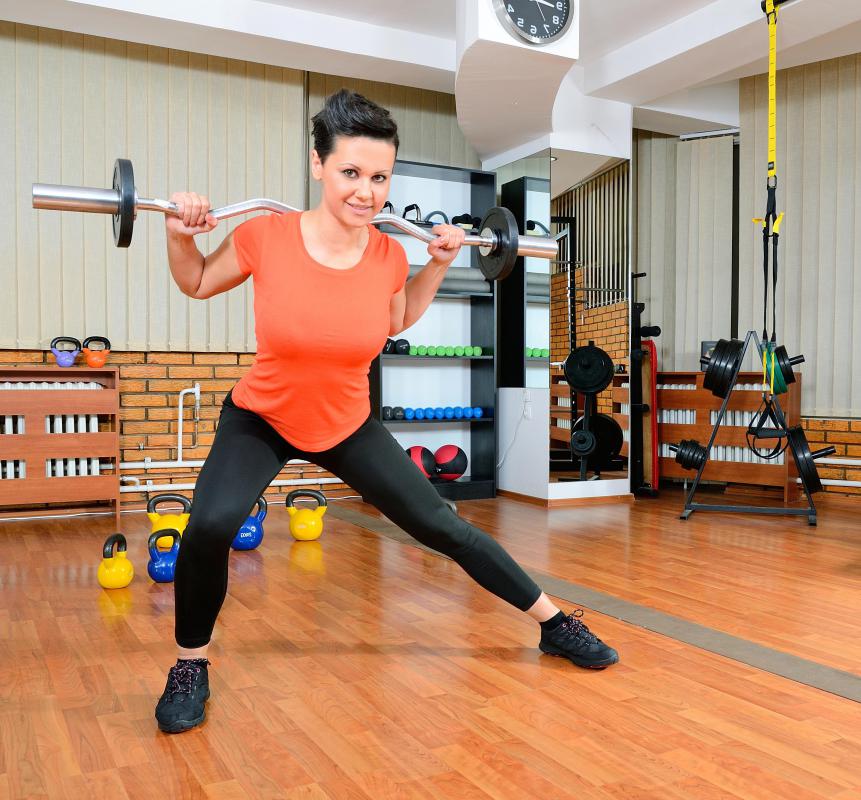At WiseGEEK, we're committed to delivering accurate, trustworthy information. Our expert-authored content is rigorously fact-checked and sourced from credible authorities. Discover how we uphold the highest standards in providing you with reliable knowledge.
What is the Vastus Medialis?
The vastus medialis is a teardrop-shaped muscle of the lower thigh. One of the four muscles collectively known as the quadriceps, the vastus medialis is responsible for extension of the knee joint and stabilization of the patella, or kneecap. Cycling, running, and lower body resistance exercises, such as squats and lunges, activate this muscle as a primary agonist. Weaknesses in the muscle, either as a result of injury or atrophy, is sometimes associated with a painful condition known as chondromalacia patellae, or patello-femoral knee pain.
Broad, flat tendons known as aponeuroses anchor the vastus medialis along two lines of attachment on the upper surface of the femur. Additionally, the muscle origin joins with that of the other muscles of the quadriceps group. This same type of connective tissue inserts most of the muscle's distal portion to the shared tendon that attaches the quadriceps to the patella.

The lowest fibers of the muscle attach directly to the border of the patella, separate from the other quadriceps. It is thought that the patellar attachment functions to stabilize any side-to-side movements of the kneecap during leg extension. Sometimes referred to as the vastus medialis oblique, or VMO, the muscle region involved in this particular attachment is visible on the leg as a teardrop-shaped muscle near the inner knee.

In general, most cardiovascular and lower body exercises stimulate the vastus medialis to some extent. To target the quadriceps group, barbell squats, lunges, and leg extensions are popular choices. Specifically isolating the vastus medialis from the other quadriceps muscles is more difficult, as they share common origin and insertion points and govern the same movements. Step-ups, adductor exercises, and deep squats, such as the Olympic squat, tend to focus a greater degree of stress on the vastus medialis, however.

All quadriceps muscles function in the extension of the knee, but the vastus medialis is particularly associated with the final 20° of extension. When the muscle has atrophied as a result of prolonged bed rest, movement of the knee joint becomes unstable and complete extension can be impossible. It is this phenomenon that leads the VMO to be associated with the pain and instability of chondromalacia patellae, often referred to simply as chondromalacia. The exact connection between the two, however, remains controversial.

Chondromalacia is not a specific disorder, but rather a set of symptoms involving the knee. The theory behind the VMO-chondromalacia relationship is that weakness or injury in the VMO can result in loss of patellar stability. This loss of stability can, in turn, result in damage to surrounding tissue as the patella slides back and forth during leg movement. Pain in the knees, particularly while squatting, sitting, or walking on stairs, together with popping noises in the knee or sudden loss of stability in the joint itself are typically associated with the condition.

When transient, this type of knee pain can often be treated symptomatically, using a combination of rest, ice, compression, and elevation. If the pain is ongoing, medical treatments, such as prescription medication and physiotherapy exercises, may be necessary. While the recovery process from chondromalacia can be lengthy, the majority of patients usually achieve a full recovery.
AS FEATURED ON:
AS FEATURED ON:

















Discuss this Article
Post your comments